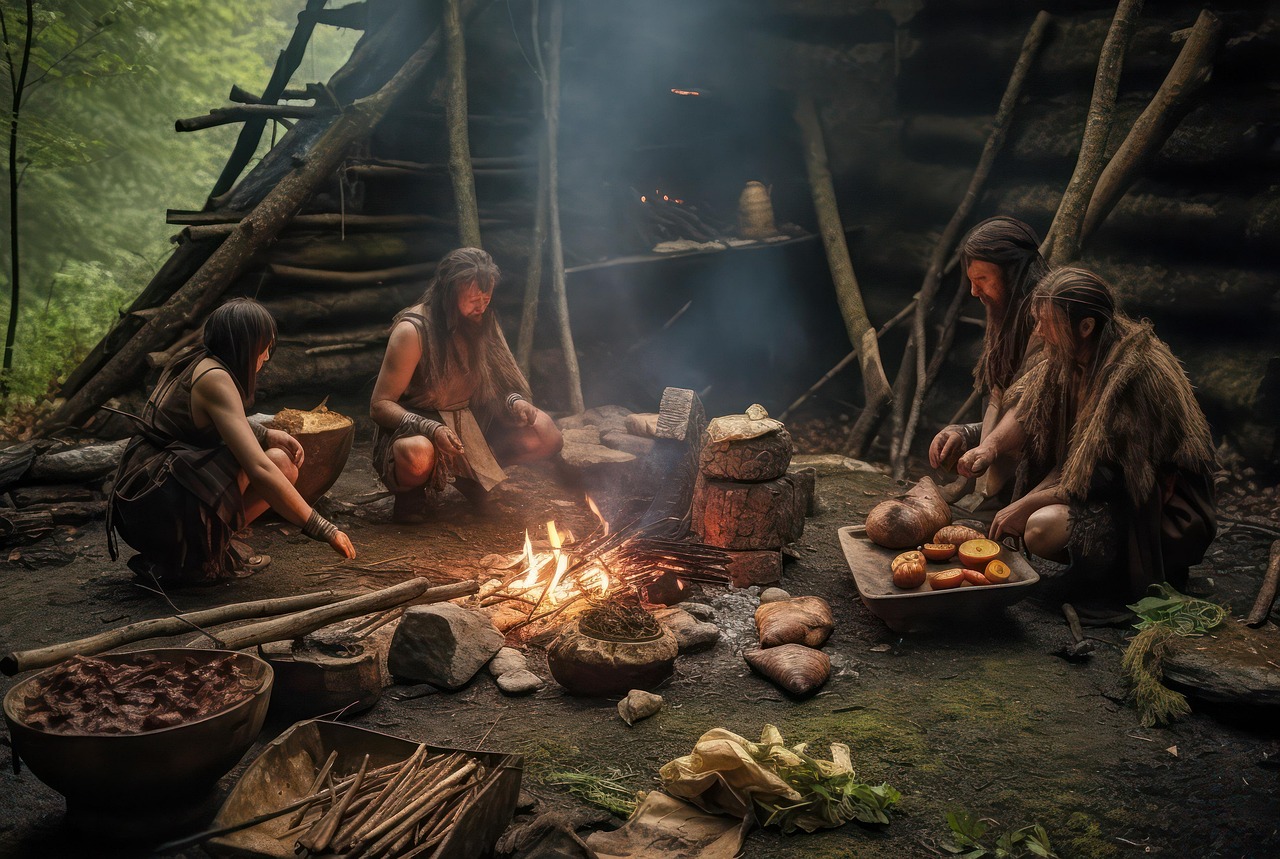To determine the age of a sycamore tree, one must examine its growth rings and measure its size. By counting the rings in a cross-section of the trunk, or by analyzing the size of the tree, one can estimate its age. Growth conditions affect ring width, making some years more significant than others.
The sycamore tree, known scientifically as Platanus occidentalis, is a common deciduous tree found in North America. It is easily recognizable due to its distinctive bark, which peels away in patches to reveal a smooth, white surface underneath. This tree thrives in various environments, often found near water bodies such as rivers and lakes. Understanding how to determine its age is important for various reasons, including ecological studies, timber management, and historical research.
One effective method for estimating the age of a sycamore tree is through the examination of growth rings, which are formed annually. Each ring typically represents one year of growth. However, environmental factors such as soil quality, moisture availability, and sun exposure can influence the thickness of these rings. Therefore, while counting rings gives a direct indication of age, it’s essential to consider these additional factors for more accurate results.
Understanding Growth Rings

Growth rings are visible layers of wood that form around the central core of the tree trunk. Each ring consists of two parts: earlywood and latewood. Earlywood forms during the spring when growth conditions are favorable. Latewood forms in the summer and fall when growth slows down.
The width of each ring can vary significantly due to several factors:
- Climate: Wetter years often produce wider rings, while drier years result in narrower rings.
- Soil Quality: Nutrient-rich soils can lead to more robust growth.
- Age: Young trees tend to have wider rings compared to older trees due to their vigorous growth.
Measuring the diameter of the tree trunk is another method to estimate age. Generally, larger trees are older than smaller ones. However, this method can be less precise due to variations in growth rates among trees in different environments. To accurately determine age using trunk diameter, one must know the average growth rate for sycamore trees in a specific region.
| Diameter (inches) | Approximate Age (years) |
|---|---|
| 6 | 10-15 |
| 12 | 30-40 |
| 24 | 70-100 |
In addition to growth rings and trunk size, other factors may also contribute to understanding a sycamore tree’s age. These include historical events that could have influenced tree growth or locations where trees were planted. Observing these elements can provide deeper insights into a tree’s life history and its surrounding ecosystem.
By combining methods such as ring counting and measuring trunk diameter along with considering environmental influences, one can develop a comprehensive understanding of the age of a sycamore tree. The process requires patience and attention to detail but can yield valuable information about the tree’s history and role in its environment.
Factors Influencing Growth Rings in Sycamore Trees
Understanding the growth rings of a sycamore tree requires an exploration of various factors that affect their formation. Each ring’s characteristics can reveal much about the environmental conditions during each growing season. Here are some key influences on growth rings:
- Weather Patterns: Weather plays a critical role in the growth of trees. Warm, wet springs can lead to wide rings, while dry or cold seasons often result in narrower bands.
- Pest Infestations: Insect activity can damage the tree, affecting its growth. A year with significant pest problems may show stunted growth, reflected in the formation of thinner rings.
- Soil Nutrients: The availability of nutrients in the soil directly impacts tree health. A nutrient-rich environment usually leads to vigorous growth and wider rings.
- Competition: Trees growing in crowded conditions may exhibit narrower rings due to competition for sunlight and resources.
Identifying Growth Conditions through Ring Analysis
By analyzing the physical attributes of growth rings, researchers can infer specific growth conditions. Here are some methods to identify these conditions:
- Ring Width Measurement: By measuring the width of each ring, one can assess the annual growth rate. Wider rings indicate favorable growing conditions.
- Density Variation: Differences in wood density between earlywood and latewood can signify variations in moisture and nutrient availability during the growing season.
- Visual Patterns: Abnormal growth patterns, such as abrupt changes in ring width or irregular shapes, can suggest stress events such as droughts or flooding.
The Role of Environmental Stressors
Environmental stressors can significantly impact the growth of sycamore trees. Understanding these factors helps in interpreting the growth rings accurately. Key stressors include:
- Drought: Extended periods of drought can lead to stress, resulting in noticeably narrower rings. This phenomenon is common in areas experiencing climate variability.
- Flooding: Conversely, excessive moisture during critical growth periods can also affect ring formation, leading to irregular growth patterns.
- Temperature Extremes: Unusually high or low temperatures can hinder growth, leading to fluctuations in ring width.
Long-term Climate Trends
The long-term climate trends in a region can help predict the potential age and health of sycamore trees. Researchers often use tree-ring data to analyze historical climate conditions. This process involves comparing tree-ring widths across multiple trees within a specific area. Such comparisons can reveal:
- Historical Climate Patterns: By correlating ring widths with known climate data, scientists can reconstruct past weather patterns and better understand how climate change affects local ecosystems.
- Paleoecology Insights: Tree-ring studies provide insights into historical vegetation and ecosystem dynamics, contributing to our understanding of forest health over time.
Techniques for Accurate Age Estimation
Accurate age estimation of sycamore trees involves integrating several techniques beyond simple ring counting. Here are some advanced methods:
- Coring Techniques: Using an increment borer allows researchers to extract a small core from the tree without causing significant harm. This method enables a clear view of growth rings without felling the tree.
- Carbon Dating: For older trees, radiocarbon dating can be used on wood samples to provide more precise age estimates when traditional methods are inconclusive.
- Dendrochronology: This scientific method involves analyzing tree-ring patterns over a long period to develop a chronological timeline, which can provide insights into both age and environmental conditions.
The integration of these techniques enhances the reliability of age estimation and contributes valuable data to ecological research and conservation efforts. As researchers continue to study sycamore trees, they uncover more about their life cycles and their responses to changing environments.

Interpreting Growth Rings for Ecological Insights

Growth rings in sycamore trees are not just indicators of age; they also serve as valuable records of ecological conditions and environmental changes over time. By studying these rings, researchers can gain insights into historical climate patterns, forest health, and ecosystem dynamics.
Climate Change and Its Impact on Tree Growth
Climate change has significant implications for tree growth, influencing both the width and density of growth rings. Here are several ways that climate change can affect sycamore trees:
- Temperature Variations: Rising temperatures can lead to extended growing seasons, potentially increasing ring width. However, excessive heat may also stress trees, resulting in narrower rings.
- Altered Precipitation Patterns: Changes in rainfall distribution can lead to periods of drought or flooding, both of which impact tree growth. Drought years typically produce narrower rings.
- Increased CO2 Levels: Higher carbon dioxide levels may enhance photosynthesis, potentially leading to increased growth rates in some conditions. However, this effect can be inconsistent and dependent on other environmental factors.
Using Tree Rings to Understand Forest Dynamics
Examining tree rings provides insight into the dynamics of forest ecosystems. Researchers can analyze variations in growth patterns across multiple trees to gain a clearer picture of forest health. Some critical aspects include:
- Species Composition: Different tree species respond uniquely to environmental changes. By comparing ring data from sycamore trees with other species, researchers can understand how different species coexist and compete.
- Disturbance Events: Growth rings can indicate disturbances such as fires, storms, or insect outbreaks. For instance, a sudden reduction in ring width across several trees may signal a widespread disturbance event.
- Succession Patterns: Changes in growth patterns over time can reveal forest succession stages. As new species establish after disturbances, their growth can be tracked through their respective ring patterns.
The Importance of Citizen Science
Citizen science plays a vital role in enhancing our understanding of sycamore trees and their growth patterns. Engaging the public in tree-ring studies can yield valuable data while fostering an appreciation for local ecosystems. Here are ways citizen science contributes:
- Data Collection: Volunteers can collect samples from various sycamore trees across regions. This broader range of data helps researchers identify trends that might not be evident from isolated studies.
- Awareness and Education: Involving community members raises awareness about the importance of trees in our environment. Educational programs can help teach participants about tree biology and the significance of growth rings.
- Conservation Efforts: Citizen scientists can contribute to conservation initiatives aimed at protecting important habitats. Their hands-on involvement fosters a deeper connection to nature and encourages stewardship.
Tools for Citizen Scientists
To engage in tree-ring research effectively, citizen scientists can utilize several tools and methods. These tools help simplify the process of collecting data and analyzing growth rings:
- Increment Borers: These specialized tools allow volunteers to extract wood cores without harming the tree significantly. Proper training ensures that samples are collected ethically.
- Measuring Devices: Calipers or measuring tapes are necessary to accurately measure the diameter of tree trunks and the width of growth rings.
- Field Guides: Resources that provide information on identifying tree species and understanding their growth patterns can aid citizen scientists in their efforts.
The combination of scientific research and community involvement enriches our understanding of sycamore trees and their role within ecosystems. As more individuals become engaged in this field, the collective knowledge about trees and their environments continues to grow.
The Future of Research on Sycamore Trees

The ongoing study of sycamore trees is crucial as climate patterns continue to shift and ecosystems evolve. Future research will likely focus on the following areas:
- Genetic Studies: Understanding the genetic diversity within sycamore populations may help identify traits that enhance resilience to climate change.
- Longitudinal Studies: Long-term monitoring projects will provide data on how tree health and growth respond to ongoing environmental changes.
- Technological Advances: Innovations in remote sensing and data analysis will allow for more extensive studies without invasive sampling, providing insights into forest health on a broader scale.
The integration of diverse research methods, citizen involvement, and technological advancements will lead to a comprehensive understanding of sycamore trees and their vital roles in our ecosystems.
Addressing Challenges in Sycamore Tree Research
Despite the advancements in methods and community involvement, several challenges persist in the ongoing research of sycamore trees. Identifying and overcoming these challenges is essential for improving our understanding and management of these vital organisms.
- Climate Variability: Rapid changes in climate can complicate predictions about growth patterns. Long-term data collection is vital, but the variability of weather conditions poses a significant hurdle.
- Human Impact: Urbanization, land use changes, and pollution can severely affect tree health. Understanding the implications of human activity on sycamore populations requires ongoing research and community education.
- Funding and Resources: Many research projects rely on grants and donations. Securing adequate funding is crucial for conducting extensive studies and maintaining long-term monitoring programs.
Addressing these challenges will require collaboration among researchers, policymakers, and the public. By working together, it is possible to develop strategies that support sycamore trees and their ecosystems effectively.
Final Thoughts
The journey to determine the age of a sycamore tree through growth rings and size offers a fascinating glimpse into the past and present of our natural world. Understanding how these trees grow and respond to their environment not only helps in estimating their age but also opens doors to a wealth of ecological knowledge. The intricate relationship between growth rings, environmental factors, and tree health highlights the importance of trees in maintaining ecological balance.
As climate change continues to challenge ecosystems worldwide, sycamore trees serve as critical indicators of environmental health. Their growth patterns can help scientists monitor changes in climate and biodiversity, providing essential data for conservation efforts. The involvement of citizen scientists amplifies this research, fostering a deeper connection between communities and their natural surroundings.
In conclusion, the study of sycamore trees through growth rings and size not only provides insights into their age but also enhances our understanding of broader ecological dynamics. Continued research, community engagement, and innovative methodologies are necessary to ensure that we can protect these valuable trees and their habitats for future generations. As we strive to understand our environment better, sycamore trees will undoubtedly remain pivotal in our pursuit of ecological knowledge and sustainability.
